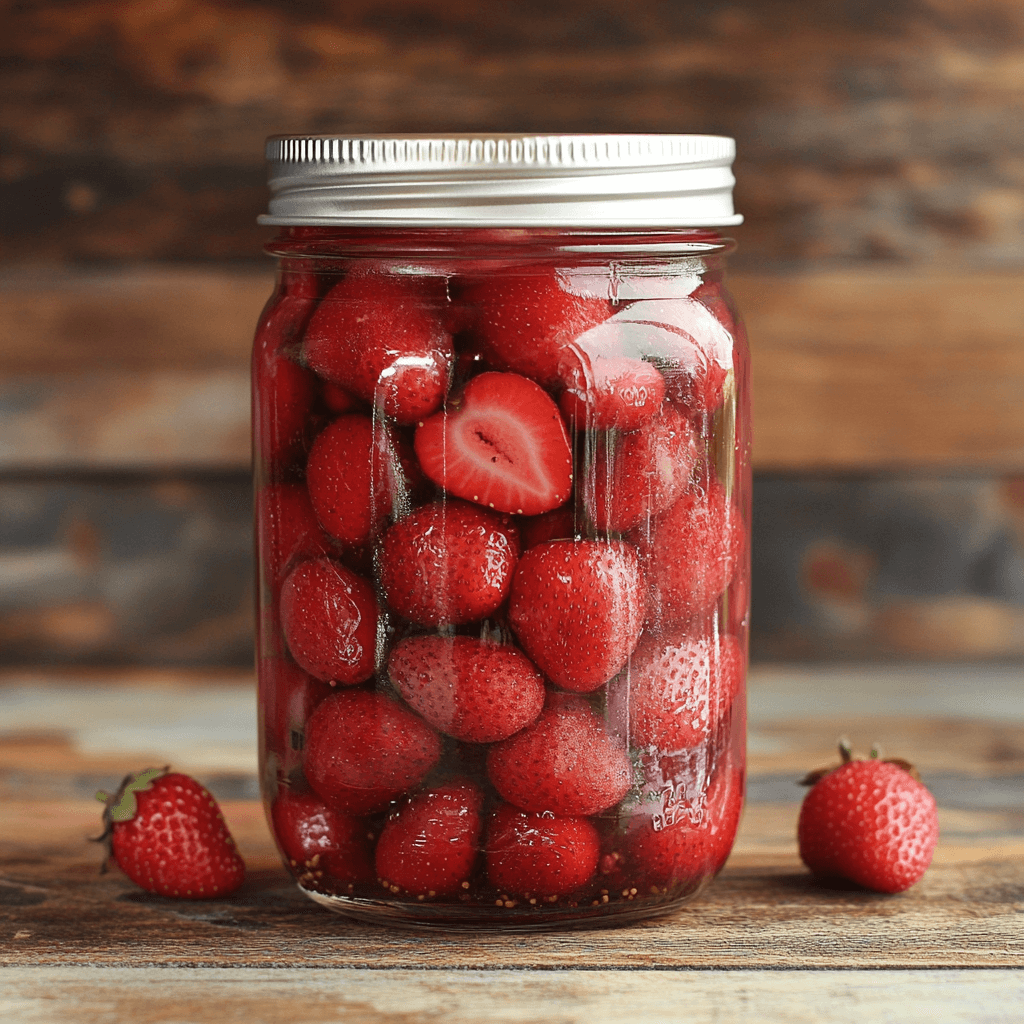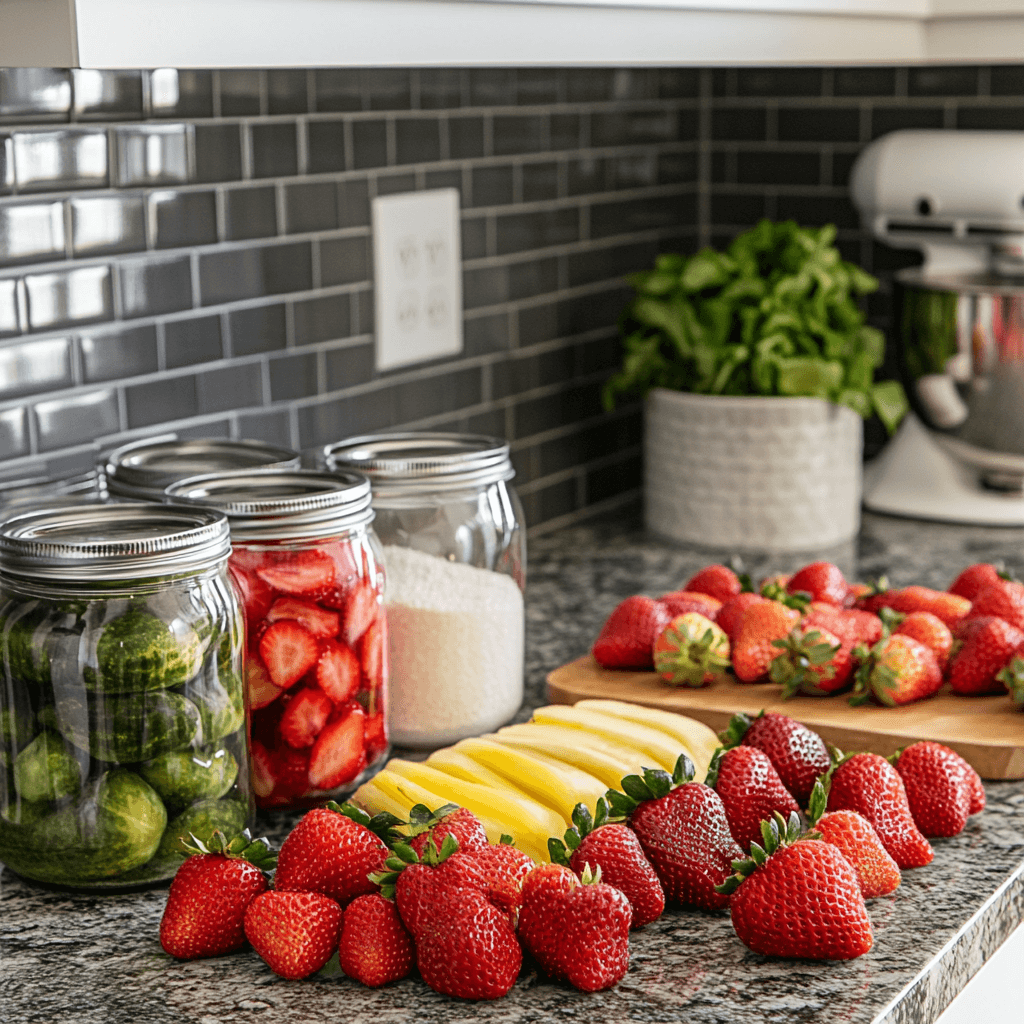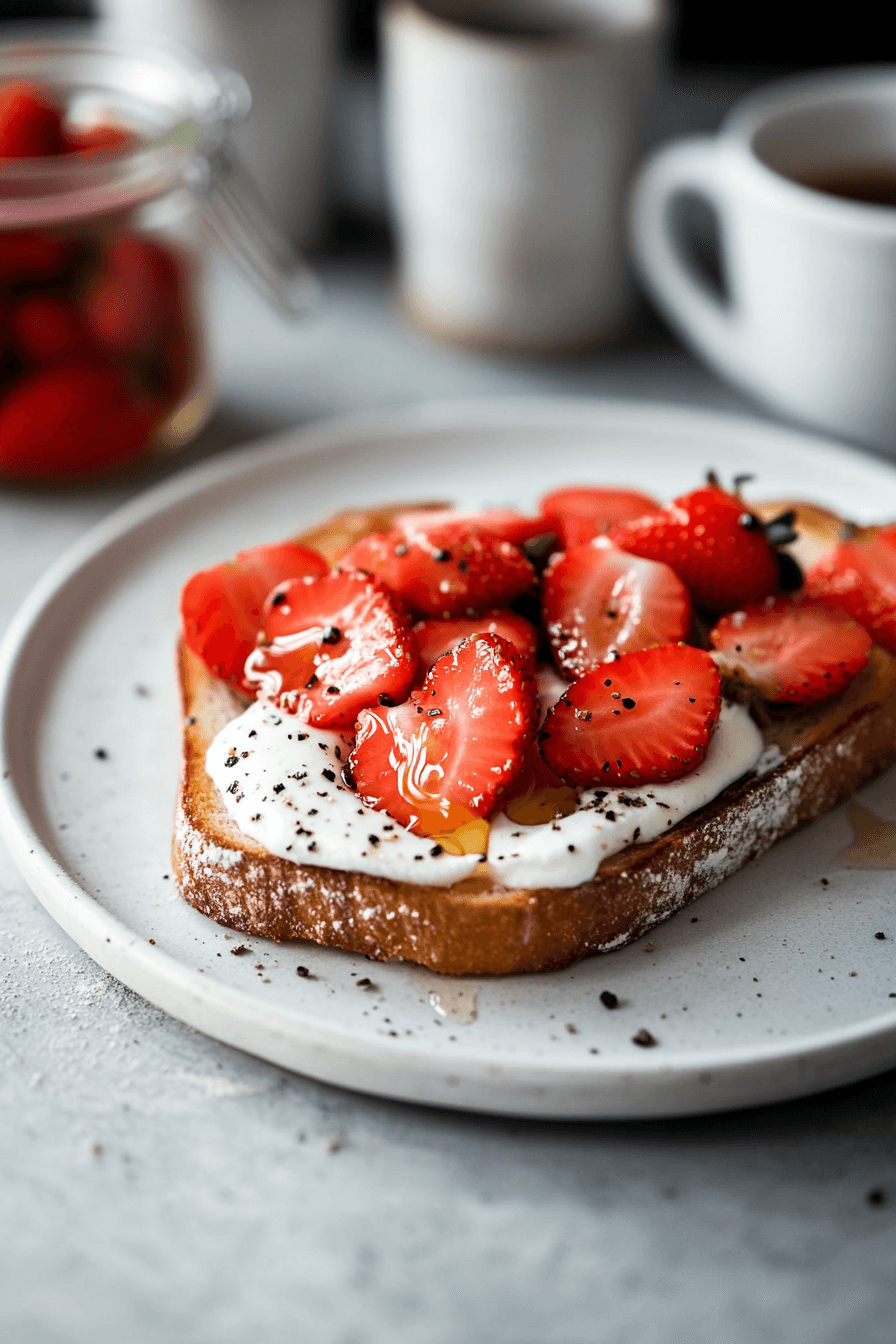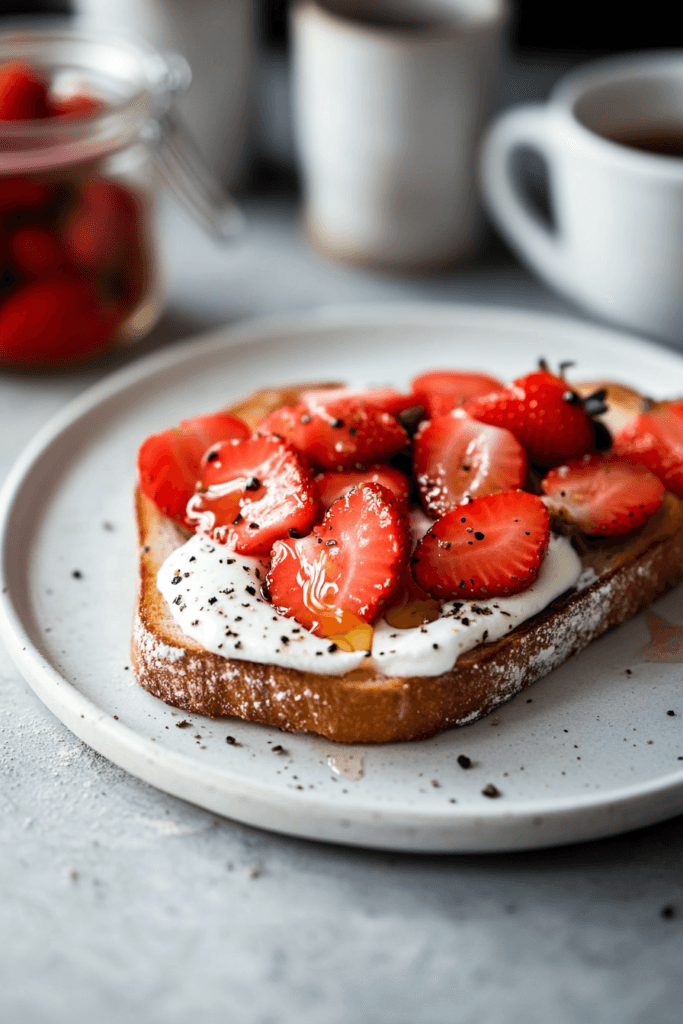Pickled strawberries are not just a culinary novelty; they are a vibrant way to capture the essence of summer. These colorful treats boast a unique combination of sweetness and tanginess that can elevate a wide range of dishes. This article will guide you through the delightful world of pickled strawberries, discussing how they taste, how to make them, and creative ways to use them in your recipes. As you explore this topic, you will learn why pickling is an excellent method for preserving your summertime bounty.
What Do Pickled Strawberries Taste Like?
When you first bite into pickled strawberries, you experience an explosion of flavors. The initial sweetness of the strawberries is quickly complemented by the tangy acidity of vinegar. This dynamic pairing creates a refreshing taste that can enliven your palate. Additionally, different types of vinegars can drastically change the overall flavor. For instance, using apple cider vinegar will give your pickled strawberries a mild sweetness and fruity note, while distilled white vinegar results in a sharper bite.
In many recipes, spices like cinnamon, cloves, or even star anise can be added to the brine. These spices impart a warm flavor, enhancing the sweet-and-sour profile of the strawberries. For example, try adding a cinnamon stick to your pickling jar. This simple tweak will introduce an inviting autumnal layer to your strawberries, making them a perfect topping for pancakes or a flavorful addition to a cheese plate.
Practical Tips:
– When using spices, consider combining flavors to create unique taste profiles. For example, pairing cinnamon with a splash of ginger can yield an exciting twist.
– Remember to adjust sweetness levels based on your palate and the ripeness of the strawberries. If they are particularly sweet, you might want to decrease the sugar in your brining solution.
How Long Does It Take to Pickle Strawberries?
The time it takes to pickle strawberries is undeniably quick, particularly when using the quick-pickling method. Essentially, you can have delicious pickled strawberries ready to enjoy in just 24 hours. This rapid turnaround makes it an appealing option for those looking to preserve the season’s flavors without dedicating extensive kitchen time.
To prepare, you simply need to slice your strawberries and prepare a brine with vinegar, sugar, and salt. Afterward, immerse the strawberries in the warm mixture and allow them to cool. Sealing them in a jar and refrigerating will let the flavors meld together beautifully. If you’re eager to taste them sooner, they can even be ready to enjoy after a refrigerator rest of just a few hours, although the flavor will be more pronounced after 24 hours.
For those with more planning in mind, traditional canning methods can extend the shelf life of your pickled strawberries—often up to a year. Nevertheless, the best way to appreciate the flavors is to consume them fresh. Therefore, consider making smaller batches throughout the strawberry season to enjoy ongoing freshness.
Practical Tips:
– If you make a larger batch, remember to label jars with the date. This will help keep track of their freshness.
– For quick pickled strawberries, try a mason jar; they’re easy to seal and will keep the brine mixed well.

What Alcohol Is Good to Soak Strawberries?
Soaking strawberries in alcohol can add an exciting dimension to their flavor. Various alcoholic beverages, like vodka, rum, or even sparkling wine, create unique pairings that can enhance your pickled creations. Vodka, known for its neutral flavor, allows the sweetness of the strawberries to shine through without overwhelming it. Conversely, spiced rum can introduce a warm, spicy undertone that complements the tangy sweetness beautifully.
For an extravagant twist, consider using champagne or prosecco. These sparkling options can lighten the overall flavor, making for a refreshing treat suitable for summer gatherings. Imagine serving a salad topped with lightly pickled strawberries marinated in champagne—it’s sure to impress.
Moreover, soaking strawberries in alcohol not only enhances their flavor but can also lend itself to creative cocktails. Mixing pickled strawberries into drinks like margaritas or mojitos can add an unexpected, delicious twist, tantalizing guests’ taste buds.
Practical Tips:
– When soaking strawberries, opt for a balance of flavors. Mixing alcohol and sugar will help enhance the sweetness.
– It’s essential to remember that the final pickling flavor will depend on the length of time you let them soak. A few hours will offer a subtle hint, while soaking overnight will produce a more pronounced taste.
Why Do You Soak Strawberries in Vinegar?
Soaking strawberries in vinegar is fundamental to the pickling process, as vinegar plays a crucial role in preservation. The acidity in vinegar inhibits the growth of bacteria, allowing your strawberries to stay fresh and delicious for an extended period. Moreover, vinegar contributes significantly to the flavor profile, balancing the natural sweetness of the strawberries.
Different vinegars can impart varying flavors, so experimenting is key! Distilled white vinegar will give your strawberries a clean, crisp taste. In contrast, apple cider vinegar adds a round, fruity complexity, while rice vinegar can introduce a gentler taste, perfect for those wary of sharp acidity.
It’s also worth noting that vinegar helps tenderize the fruit. When strawberries soak in the vinegar, they become softer and more flavorful. This process helps to coax out their natural juices, blending beautifully with the brine.
Practical Tips:
– Always choose a high-quality vinegar, as the flavor characteristics can greatly impact the final product.
– You may want to experiment with mixing vinegars for a more complex flavor—using half apple cider and half white, for example, can yield delightful results.
What Fruits Taste Good Pickled?
While strawberries shine as a pickled delicacy, many other fruits can also benefit from the pickling process. Consider peaches, plums, and even cherries, which can provide delightful comparisons in texture and flavor.
Pickled peaches, for instance, can add a sweet and tart profile perfect for salads, particularly when paired with greens like arugula or spinach. Adding a layer of feta cheese will complement the peaches beautifully. Using pickled plums can create a flavorful contrast when served alongside meats, while pickled cherries make for an elegant garnish on savory dishes or even desserts.
Further, combining different fruits can create visually stunning and texturally diverse pickles. A jar filled with vibrant red strawberries, sweet yellow peaches, and dark plums provides a feast for the eyes and the palate.
Additionally, if you’re looking for something unusual, consider pickling watermelon or cantaloupe. Their refreshing sweetness becomes even more interesting after pickling, creating a unique complement to salty or spicy dishes.
Practical Tips:
– Don’t hesitate to mix and match fruits for variety; a variety of textures and flavors can make your pickles more exciting.
– Think about fruit sizes when slicing. Ensure that similar-sized pieces will pickle uniformly.
What Are the Strawberries That Taste Like Pineapple Called?
Pineberries are an intriguing variety of strawberries known for their light pink hue and unique flavor that resembles pineapple. They are often less sweet than their red counterparts but boast a delightful tropical essence that can surprise the palate.
When pickled, pineberries can add an unexpected twist to your culinary endeavors. Their distinct flavor makes them a perfect addition to salads or savory dishes—imagine using pickled pineberries with grilled meats. The tropical taste could perfectly balance savory profiles while leaving guests curious about the flavor.
Experimenting with this unique variety can take your pickling process to another level. You can even compare pickled strawberries with pickled pineberries side by side to see which flavors resonate more with your guests.
Practical Tips:
– Seek out pineberries in local farmers’ markets or specialty stores during the strawberry season. Their short window of availability is just another reason to pick them while you can!
– When making a recipe involving both strawberries and pineberries, adjust the sugar level accordingly. Pineberries can require slightly more sugar to compensate for their less sweet nature.
Ingredients and Instructions for Pickling Strawberries
Now that we’ve delved into the delightful aspects of pickled strawberries, let’s transition to the practical side of things. Here is a straightforward list of ingredients you’ll need, along with detailed instructions to help you create your pickled strawberries at home.
Ingredients List:
| Ingredient | Amount | Notes |
|---|---|---|
| Fresh strawberries | 2 cups | Clean, hulled, and sliced |
| Sugar | 1 cup | Adjust sweetness to taste |
| White vinegar | 1 cup | Substitute with cider vinegar if desired |
| Salt | 1 tablespoon | For flavor balance |
| Spices (e.g., cinnamon, cloves) | Optional | Add personal touch |
Table of Contents
Instructions
- Prepare the Strawberries: Start by selecting fresh, ripe strawberries. Wash them thoroughly and hull each strawberry carefully. For an even brine absorption, slice them in halves or quarters. The size of the slices can affect pickling time.
Create the Brine: In a clean saucepan, combine the sugar, vinegar, salt, and any spices you plan to use. Heat this mixture over medium heat, stirring frequently until the sugar dissolves completely. This process usually takes about two to three minutes. Once it starts to simmer, remove it from heat but allow it to cool slightly.
Combine: Place the sliced strawberries in a clean jar. Pour the warm brine over the strawberries, ensuring they are fully submerged. This step is crucial for optimum flavor absorption. If needed, gently press the strawberries with a spoon to eliminate any air bubbles.
Seal and Chill: Secure the jar with a tight lid and place it in the refrigerator. Allow the strawberries to pickle for at least 24 hours; however, they will begin to develop flavor after only a few hours if you’re in a hurry. The longer they sit, the better they taste!
Enjoy Your Pickled Strawberries: Once ready, these tangy treasures can be used in various dishes. Try them on salads, with cheeses, or as a unique topping for desserts like ice cream or shortcake. Their versatility is one of the many joys of pickled strawberries.
With this detailed instruction and the deeper dive into the fascinating world of pickled strawberries, you’re now well-prepared to embark on your pickling adventure. In the next section, we’ll continue exploring frequently asked questions and creative ideas to refine your pickling techniques and broaden your culinary skills!
markdown
How to Make Pickled Strawberries Step-by-Step (continued)
Cooling and Storing
After pouring the brine over your beautifully sliced strawberries and sealing the jar, it’s important to allow the mixture to cool to room temperature before placing it in the refrigerator. Doing this allows the brine to retain the best flavors and prevents condensation. Generally, allow about 30 minutes of cooling time on your kitchen counter.
Next, transfer the jar to the refrigerator. Allow the strawberries to soak in the brine for a minimum of 24 hours! This waiting period is crucial because it enables the strawberries to absorb the flavors, resulting in a delightful combination of sweet and tangy. If you’re eager to taste them, you can sample them after just a few hours, but you might find that the flavor experience drastically improves after a day or two.
Taste and Adjusting
Once the pickling time is complete, it’s always a good idea to taste your creation. This tasting step allows you to determine if the flavors meet your expectations or if adjustments are necessary. If your pickled strawberries are too sweet, consider adding a splash more vinegar for balance. Conversely, if the mix is overly tart, a little extra sugar can help to mellow the flavors.
Additionally, don’t hesitate to experiment! Personalizing your pickled strawberries can yield fascinating results. For instance, adding more herbs or spices to your brine can create distinct profiles and delightful surprises. Consider incorporating fresh mint or a sprig of rosemary for a refreshing twist.
Utilizing Leftover Brine
After enjoying your pickled strawberries, don’t discard the remaining brine! Instead, think of creative ways to use it, as it can still retain a wealth of flavor. You can:
- Marinate Proteins: Use the leftover brine to marinate chicken or pork, imparting a sweet and tangy flavor.
- Make Salad Dressings: Combine the brine with olive oil and mustard to create a unique vinaigrette that will elevate any salad.
- Pickle Other Fruits: Use the brine to pickle additional fruits like peaches or cucumbers, allowing you to mix and match flavors.
By making the most of your ingredients, you not only minimize waste but also expand your culinary repertoire.

Pro Tips & Variations for Pickled Strawberries
To create exceptional pickled strawberries, it helps to follow some insider tips and techniques. Here are effective strategies to enhance your pickling experience:
1. Experiment with Flavor Combinations
One of the best aspects of pickling is the opportunity to customize flavors. Here are some intriguing ideas to elevate your pickled strawberries:
- Spice Infusion: Introduce spices like allspice, pink peppercorns, or ginger for an additional depth of flavor. For example, a few slices of fresh ginger can add warmth and complexity.
Zest It Up: Adding citrus zest, such as lemon or orange, can bring a bright flavor to your brine. The zesty notes complement the berries beautifully and create a fresh experience.
2. Get Creative with Salads and Dishes
Pickled strawberries can transform a variety of dishes. Here are several suggestions for incorporating them into your meals:
- Refreshing Tuna or Chicken Salad: Mix chopped pickled strawberries into your usual tuna or chicken salad. The added sweetness and acidity will provide a wonderful contrast, making an ordinary dish extraordinary.
Charcuterie Boards: Include pickled strawberries on your cheese board. They pair excellently with creamy cheeses such as goat cheese or brie, and the colorful presentation will be a feast for the eyes.
3. Celebrate Seasonal Ingredients
Seasonality plays a huge role in culinary experiences. Take advantage of using seasonal ingredients alongside your pickled strawberries:
- Fall Harvest Salads: Combine pickled strawberries with roasted butternut squash, toasted pecans, and arugula for a vibrant autumn salad that bursts with flavor.
Summer DelightDesserts: Top your summer desserts, like vanilla ice cream or fruit tarts, with pickled strawberries for a pleasing contrast that will leave everyone in awe.
Frequently Asked Questions (FAQs)
In this section, we will clarify some common questions you might have regarding pickled strawberries. Addressing these inquiries can deepen your understanding of the topic and enhance your culinary skills.
1. What Does a Pickled Strawberry Taste Like?
A pickled strawberry delivers a delightful balance of sweetness and acidity. The initial sweet burst is followed by the tangy flavor of vinegar, creating a refreshing experience. The addition of spices can elevate this flavor profile even further, adding warmth or spice.
2. How Long Does It Take to Pickle Strawberries?
You will typically find that pickled strawberries can be enjoyed within 24 hours of preparation. However, for the best flavor, allow them to sit for a few days in the refrigerator. This time allows the flavor to deepen and blend thoroughly.
3. What Alcohol Is Good to Soak Strawberries?
Various types of alcohol pair wonderfully with strawberries. Options include vodka for a neutral flavor or rum for a sweeter note. You might also try champagne for a bubbly pickled treat to brighten your culinary creations.
4. Why Do You Soak Strawberries in Vinegar?
Soaking strawberries in vinegar is crucial for the pickling process as it not only preserves the fruit but also adds a zesty bite that balances the sweetness. The acidity helps inhibit the growth of bacteria, ensuring food safety.
5. What Fruits Taste Good Pickled?
Many fruits are excellent pickled, including peaches, cherries, apples, and even cucumbers. Each fruit offers a unique flavor and texture when preserved, allowing for exciting combinations.
6. What Are the Strawberries That Taste Like Pineapple Called?
Pineberries are the special variety of strawberries that have a light pink hue and a flavor reminiscent of pineapple. Their unique taste can provide an exciting facet when included in pickling projects.
Conclusion
In conclusion, pickled strawberries represent not only a unique twist on traditional preservation methods but also an amazing way to enhance your culinary repertoire. By following the steps outlined here, trying various flavor combinations, and using pickled strawberries in a range of dishes, you can savor the fresh, tangy taste of summer throughout the year. Whether you’re adding them to salads, pairing them with cheese, or exploring inventive dessert toppings, you’ll find they elevate any meal with their vibrant flavor.
By embracing the art of pickling strawberries, you open up a world of culinary possibilities that are both delicious and rewarding.




